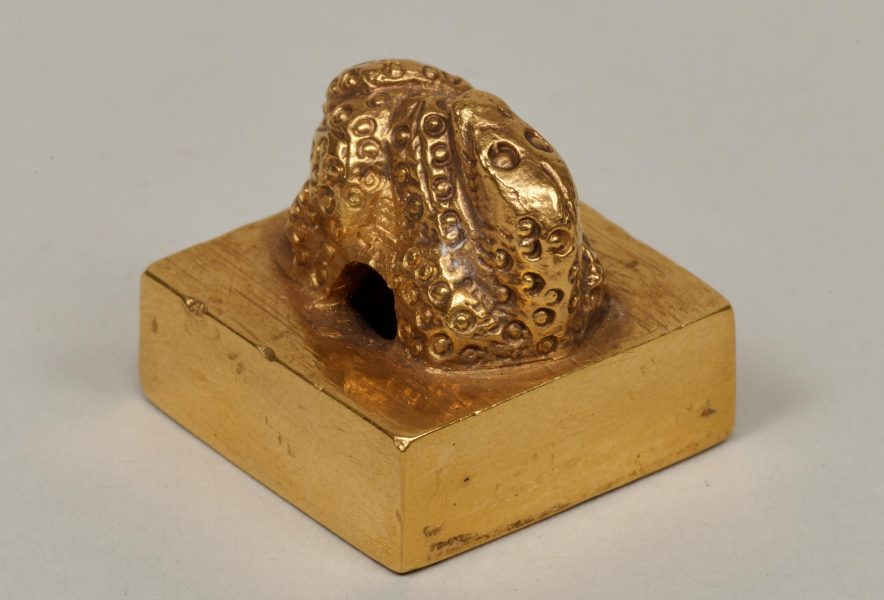selection criteria
National treasures are designated under the Law for the Protection of Cultural Properties, which defines them as tangible cultural properties (important cultural properties) that are of world cultural value and unparalleled national treasures.
National treasures and important cultural properties are decided by the Council for Cultural Affairs, which is set up by the Ministry of Education, Culture, Sports, Science and Technology. The members of the Council investigate and report to the Minister of Education, Culture, Sports, Science and Technology, who then makes the final decision.
A work or object is designated a National Treasure if it is not only a great work or object, but also if it is of high value from a global perspective.

Karabitsu Mosha-zu (唐櫃模写図), Meiji period, Source: ColBase (https://colbase.nich.go.jp/)
See also The Secret of Japanese Ceramics: What makes them so original?
Types of national treasures
There are eight types of national treasures: artefacts, calligraphic works and classic books, buildings, paintings, sculptures, ancient documents, archaeological and historical materials, and as of October 2020, 1120 national treasures and 13,281 important cultural properties have been designated (important cultural properties include the number of national treasures).
Of these, 253 are crafts, the largest number. Crafts include ceramics and Buddhist ritual implements. Swords (Japanese swords) account for 40% of the total.

Tachi (太刀), Meiraku Kunimitsu (銘来国光), Kamakura period, Source: ColBase (https://colbase.nich.go.jp/)
This and that concerning national treasures
The temple with the largest collection of national treasures is Horyu-ji (法隆寺) in Nara Prefecture. It has a total of 38 National Treasures, 20 of which are arts and crafts and 18 of which are buildings.

Kinin (金印 :Golden Seal), Source: ColBase (https://colbase.nich.go.jp)
Some of the national treasures are not made in Japan. The most famous is the ‘Kinin (金印 :Golden Seal)’.

Kinin (金印 :Golden Seal), Source: ColBase (https://colbase.nich.go.jp)
The Kinin was discovered on Shikanoshima (志賀島) in present-day Higashi Ward, Fukuoka, about 240 years ago, and is inscribed with three lines of five characters: ‘漢’, ‘委奴’ and ‘国王’, which reads ‘Kan no wan no na no kokuou’. It is believed to have been presented by Emperor Koubu to the ‘King of Wan-no-Kuni’ in 57 AD (late Yayoi period).
The least common is the ‘historical document’. This designation is based on a collection of 47 items of material related to the Keicho keno shisetsu (慶長遣欧使節) and 1,251 items of material related to the Ryukyu kokuou Shouke (琉球国王尚家).

Yamana Tsurayoshi (山名貫義), Statue of Pope Paul V (copy), Meiji era, Source: ColBase (https://colbase.nich.go.jp/)
See also The Secret of Japanese Ceramics: What makes them so original?

